The largest fair in the history of Lviv / Lwów / Lemberg, the General Regional Exhibition (Powszechna Wystawa Krajowa) was held in 1894, on the 100th year anniversary of the Kosciuszko Uprising. The aim of the exhibition was to promote Lviv as a modern metropolis and demonstrate Galicia’s economical and cultural progress since its gaining political autonomy a couple decades earlier. Parts of the exhibition were devoted to various fields such as industry, ethnography, and agriculture.
The Pavilions
The exhibition was held in Stryiski Park on area of 50 hectares, which was divided into 33 sections according to thematic groups. Under the supervision of Julian Zachariewicz and Franciszek Skowron, 129 pavilions designed by leading architects were specially erected for the event. Each was built in a different architectural style. The design typically corresponded to the content on display, but in some cases it was chosen arbitrarily by the architect or owner.

While almost none of these structures has survived until today, photo documentation of many of them has, especially photographs by the Lviv photographer Edward Trzemeski. Thanks to these images we can get an idea of what the territory looked like and see some of the architectural creations.
But these photographs capture only a small sample of everything at the exhibition — it was said that it would take an entire week to explore the whole territory with all of its sections, palaces, pavilions, attractions, and cafes.
The Palace of Art
The Palace of Art was designed in Neo-Baroque style by Franciszek Skowron, with help by Grzegorz Peżański and Michał Łużecki. The top of the pediment was decorated with an allegorical sculpture representing Art created by Julian Markowski. On either side of the main entrance were sculptures representing Sculpture and Painting executed by Antoni Popel. The pavilion housed three exhibitions: A Retrospective of Polish Art, the Antiques Exhibition, and the Exhibition of Contemporary Art.
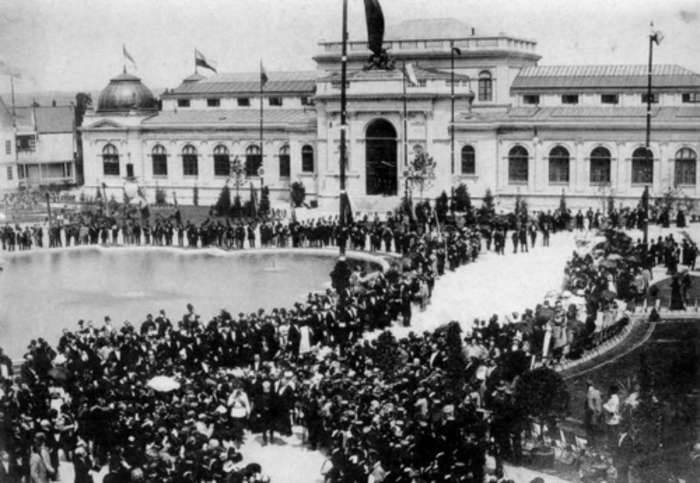
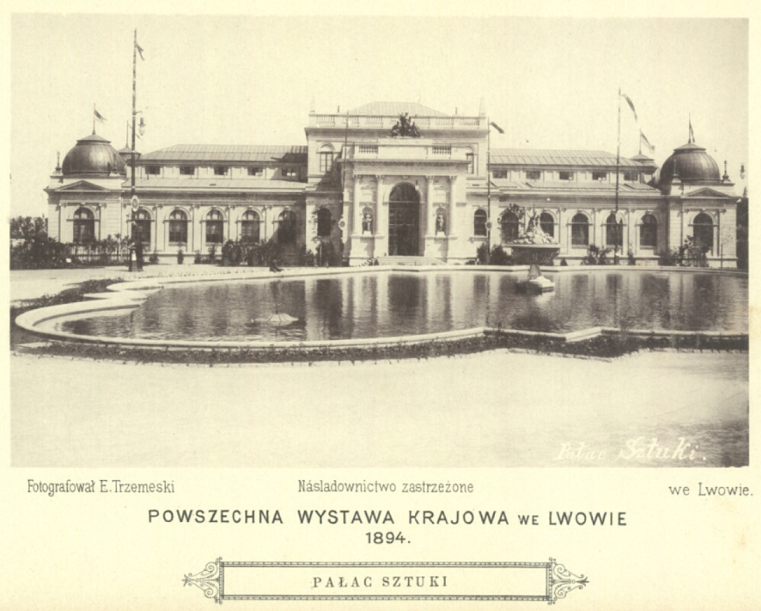
The Architecture Pavilion
The Architecture Pavilion was designed in Neoclassical style by Franciszek Skowron and J. Krolikowski. Ancient Greek paintings adorned the exterior walls, sphinxes by Tadeusz Blotnicki flanked the entrance, and a sculpture of Victoria with griffons by Anton Popel crowned the building. The pavilion exhibited items related to architecture and construction — mostly drawings and models by architects from Lviv and Krakow, the largest cities in Galicia.
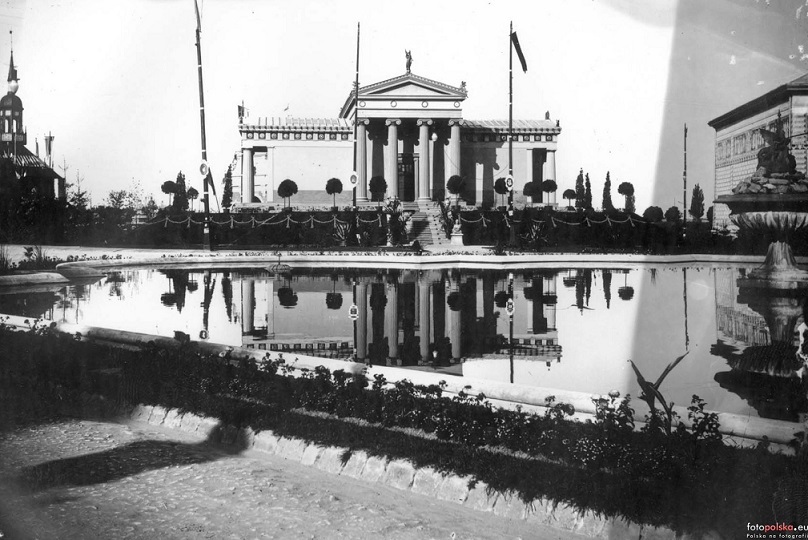
The Racławice Panorama Rotunda
One of the greatest attractions of the exhibition was the Racławice Panorama, a monumental (15×114 meter) cycloramic painting depicting the Battle of Racławice during the Kościuszko Uprising. The painting was created over a span of two years and was exhibited in specially built rotunda designed by Polish architect Ludwik Izajasz Baldwin-Ramułt.
The Matejko Masoleum
Franciszek Skowron’s Matejko Mausoleum housed 364 artworks of the renowned academy-trained Polish national painter Jan Matejko. The pavilion was decorated with Polish elements, in particular with a frieze executed by Fryderyk Lachner based on sketches by Matejko.
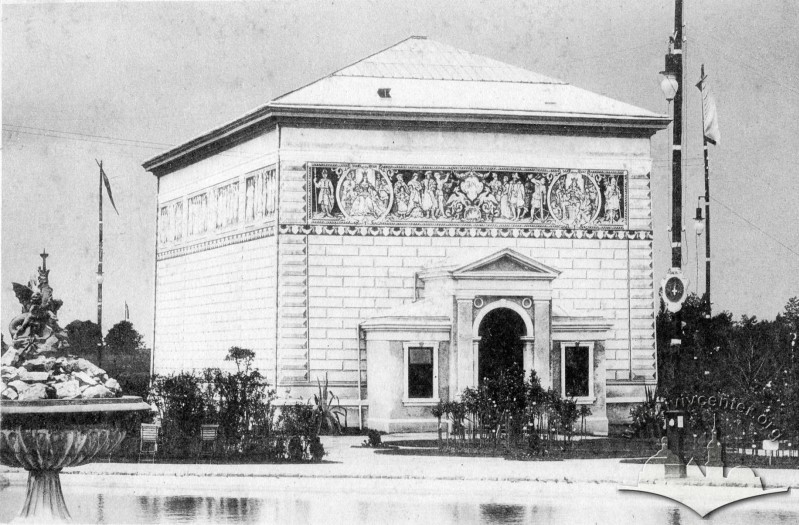
At the end of the exhibition, Abraham and Jakub Herman bought the metal structure from the pavilion and used it to build the Jewish Colosseum Theater.
For images of the theater, see: 10 Places You Will Never Visit in Lviv
The Pavilion of the City of Lviv
The Lviv Pavilion was designed in the style of a German Renaissance villa.
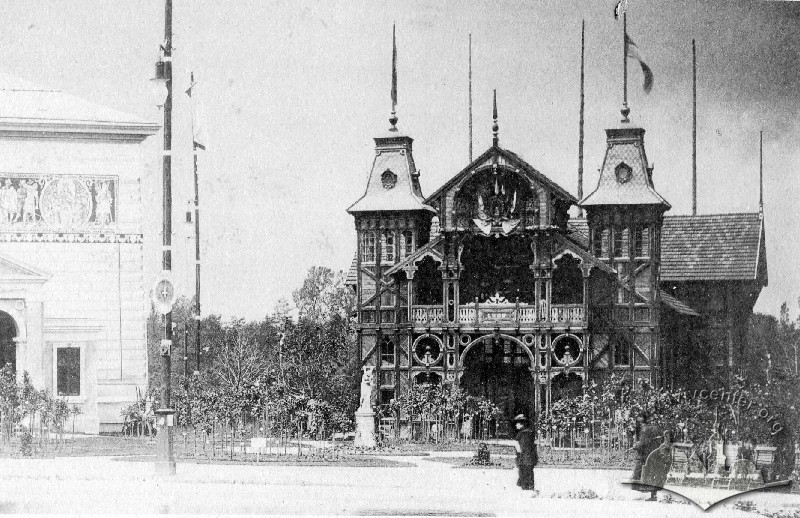
Another photograph of the Lviv Pavilion, showing also the American Pavilion.
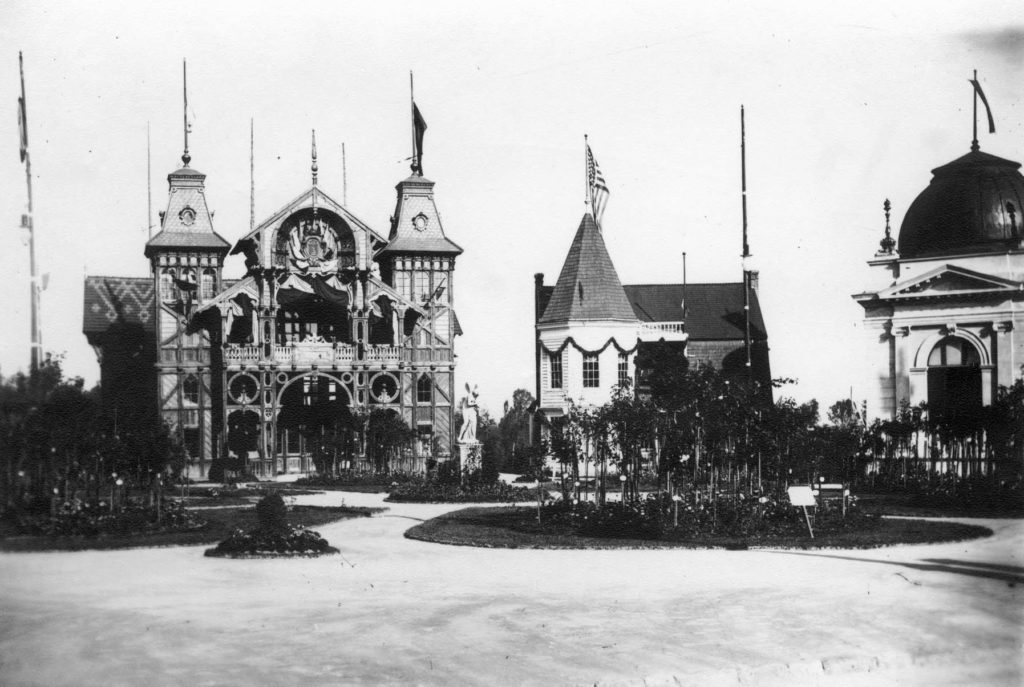
The Pavilion of Industry
Franciszek Skworon together with Czech architect Karel Boublík designed the massive Pavilion of Industry, which incorporated modern interpretations of folk motifs. The dominating element was the 32-meter dome and the mural on the pediment painted by Tadeusz Popiel. It was the largest and the most important pavilion in which the achievements and trends of industrial development in Galicia were presented.
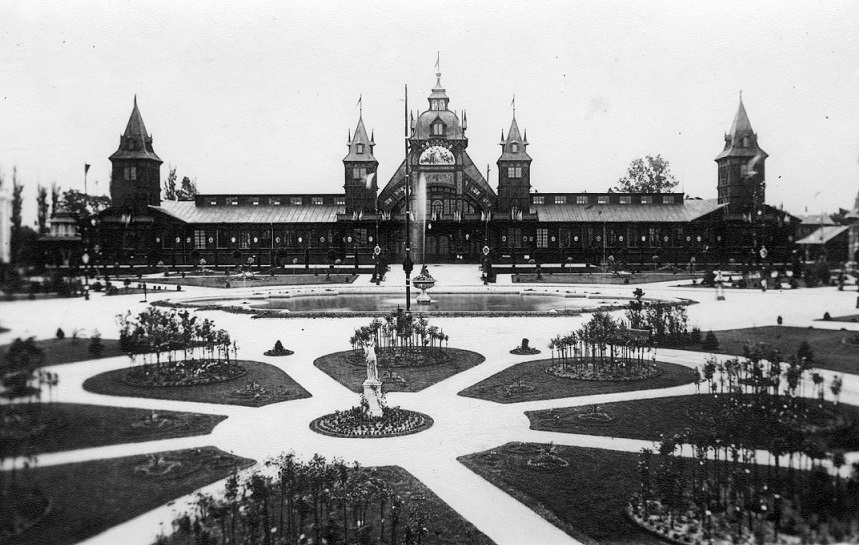
The Water Tower
Even though the water tower was built for practical reasons, a unique design was chosen. The original drawing of the “medieval style” tower was made by Julian Zaсhariewicz, while Michał Łużeck turned into an architectural plan.
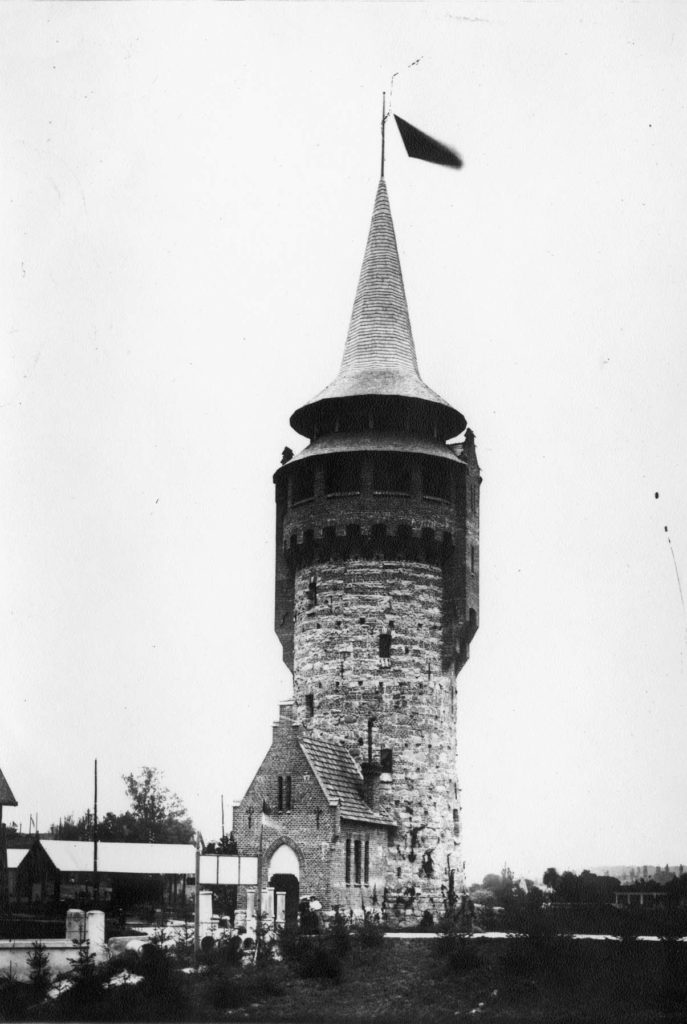
The Pavilion of Proux & Kondratowicz
Cognac producers L. Proux & G. Kondratowicz constructed a pavilion in the shape of a bottle, 144 times the size of the cognac bottles they had for sale. The structure was designed by Franciszek Czech.
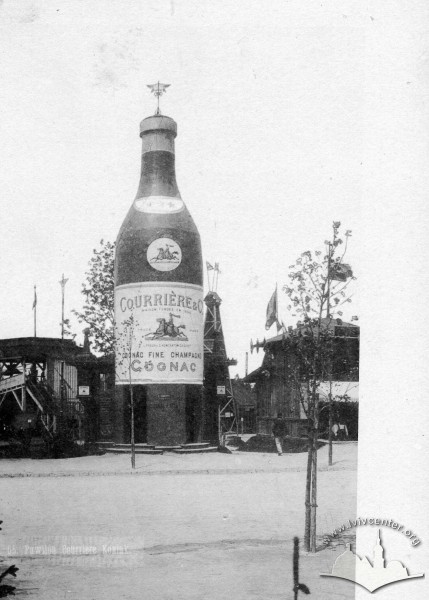
Archduke Albrecht’s Pavilion
Archduke Albrecht’s Pavilion was designed in “Goral” (Carpathian) style by architect Antoni Prokop from Cieszyn.
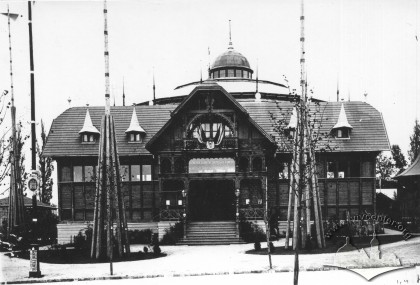
The Pavilion of Women’s Work
The Pavilion of Women’s Work was designed by architect Franciszek Skowron, and refined by architect Karol Boublik. The exhibition presented the participation and role of women in the social life of Galicia.

The Pavilion of the Sugar-Refinery Tlumacz
The Tlumaczh Pavilion was designed in neo-Gothic style by J. Boznański.
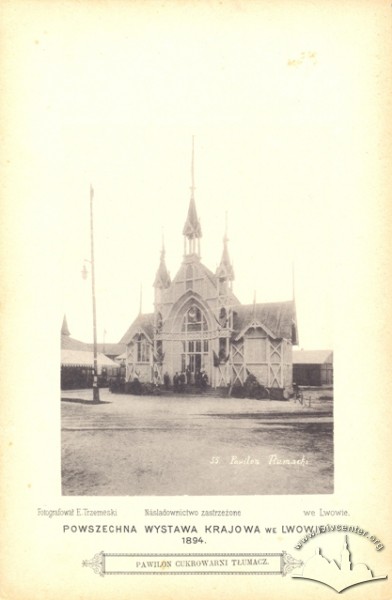
The Ruthenian Pavilion
Located next to the ethnographic section was the Ruthenian (Ukrainian) Pavilion, designed by Julian Zachariewicz and constructed by Ivan Levynsky’s firm. The building was stylized like a traditional eastern Galician farm house. The interior was polychromatic with motifs inspired by Ukrainian tapestries and rugs. The exhibition included folk-inspired pieces of furniture and metalwork, stained glass, tiles and vases, a collection of musical instruments, and portraits of Ukrainian poet Taras Shevchenko.
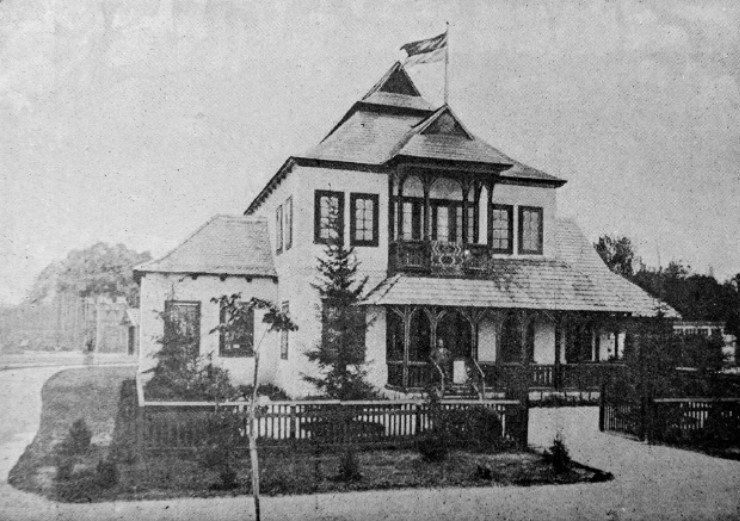
The Ethnographic Section & the Hutsul Church
The ethnographic focus of the exhibition was on the communities of Galicia. Organized as a picturesque “village,” the section had various types of buildings, including characteristic houses of several different Ruthenian (Ukrainian) and Polish ethnographic groups.
At the entrance of the section was a traditional Hutsul three-domed church designed by Julian Zachariewicz. Inside, visitors could see examples of Ukrainian sacred art. There was also a Polish-style manor house designed by Zachariewicz, which housed an ethnographic exhibition with household items and tools.
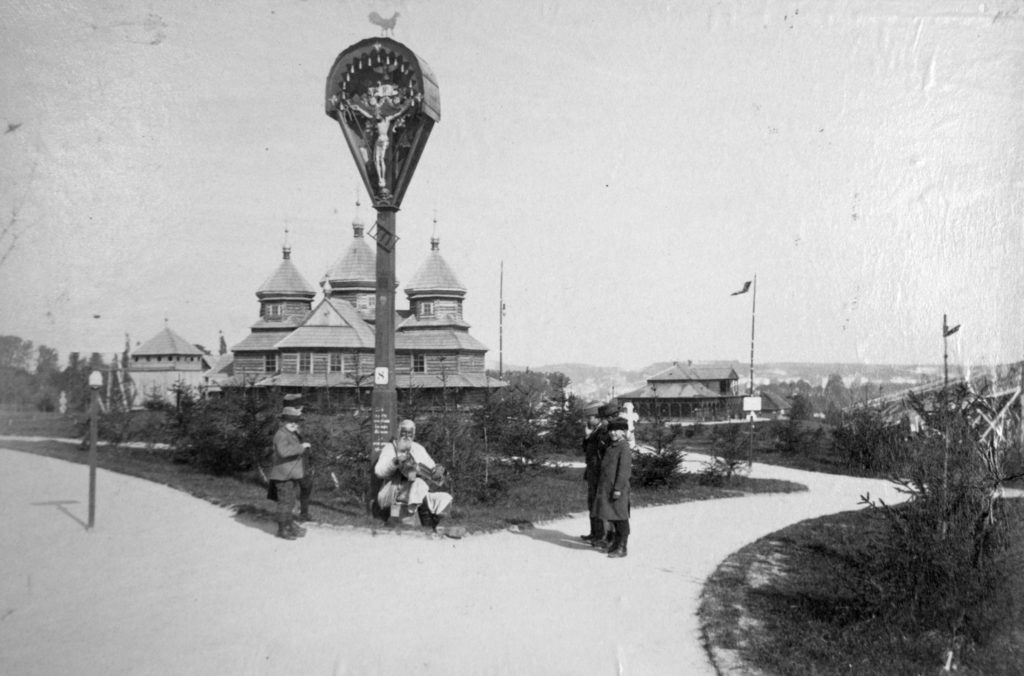

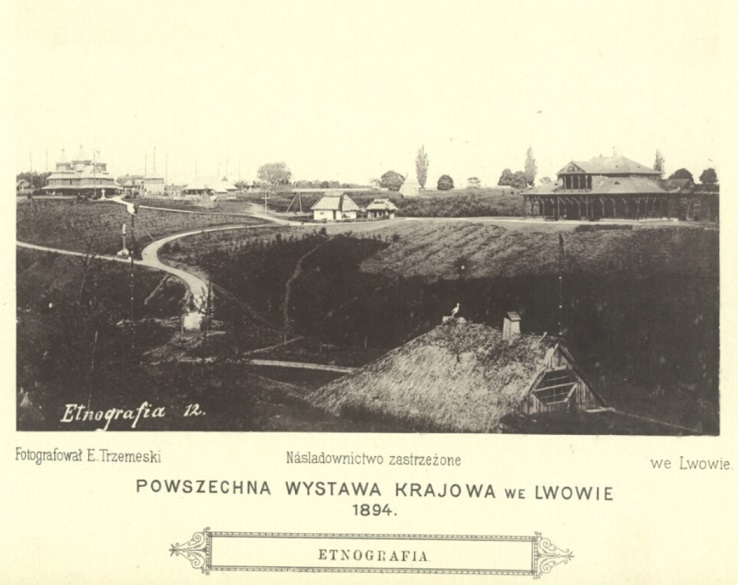
The Oil Drilling Section and the Drilling Rig
As the petroleum industry was one of the main industries of Galicia at the time, it is no wonder that the section dedicated to oil drilling was one of the most popular and largest. The main attraction was a working Canadian cable drilling rig. The section also had a forge, a drilling equipment store, a pavilion dedicated to earthwax (ozocerite), the Pavilion of the Oil Credit Society, and the Berheim and McGarvey Pavilion (McGarvey was the first to introduce the Canadian cable drilling system to Galicia). The structures were designed by architect Pekarski.

The Hunting and Forest Section & the Hunting Pavilion
Count Roman Potocki was responsible for the Hunting and Forest Section. The subjects of the exhibition included: systematization and forest management; forest protection; hunting (historical department; arms; falconry; trophies; hunting in art; professional literature); exhibition of hunting dogs; fish breeding; fishing.
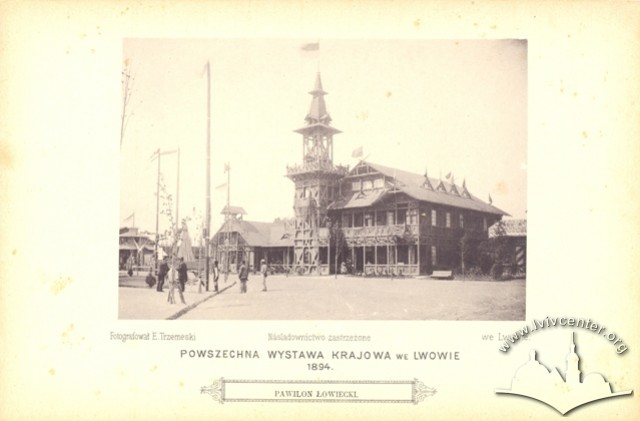
Count Roman Potocki’s Pavilion
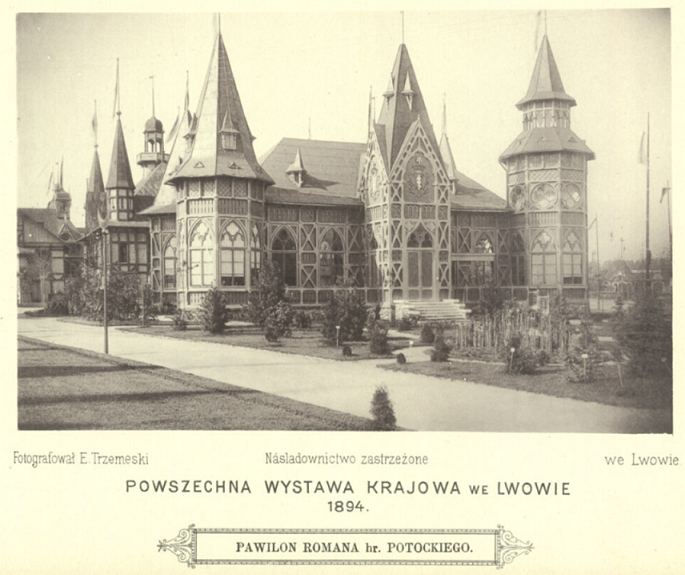
The Pavilion of the Treasury
Kaszynski’s and Wolinski’s Pavilion, The Pavilion of the Okocim Brewery, the Pavilion of Dezyderiusz Scholz’s Confectionery, Flora Perfumery
The School Pavilion, the Pavilion of the City of Lviv, the Pavilion of Industry & the Pavilion of Art as depicted on postcards
Remaining Pavilions
Out of the more than one hundred exhibition buildings, only three have survived until today, not including a few small architectural structures: the Palace of Art, the Racławice Panorama Rotunda, and the Water Tower.
Palace of Art
The Palace of Art is the only building of the exhibition that has remained largely unchanged until our time. Today it is a sports complex of the Lviv Polytechnic National University.

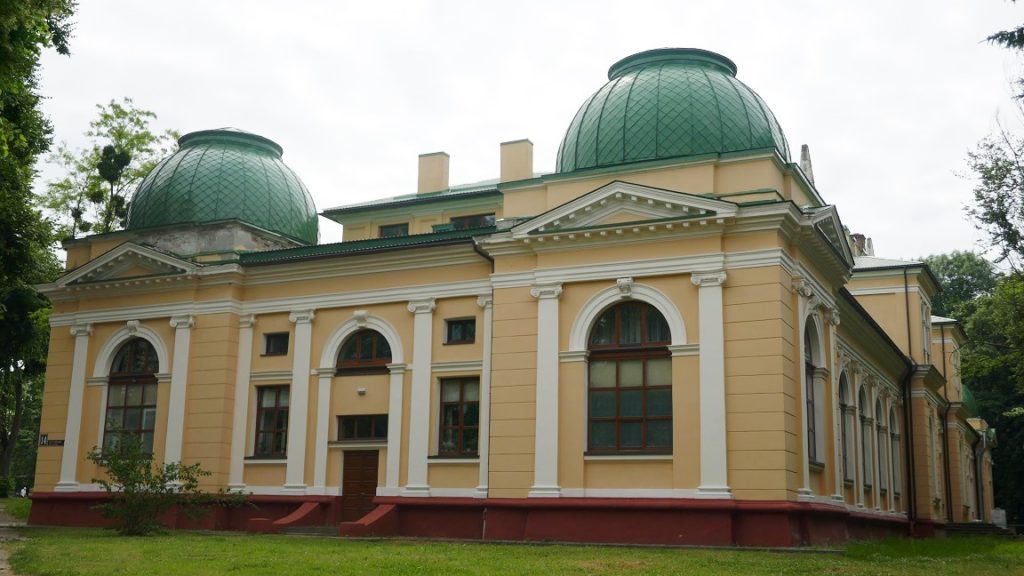
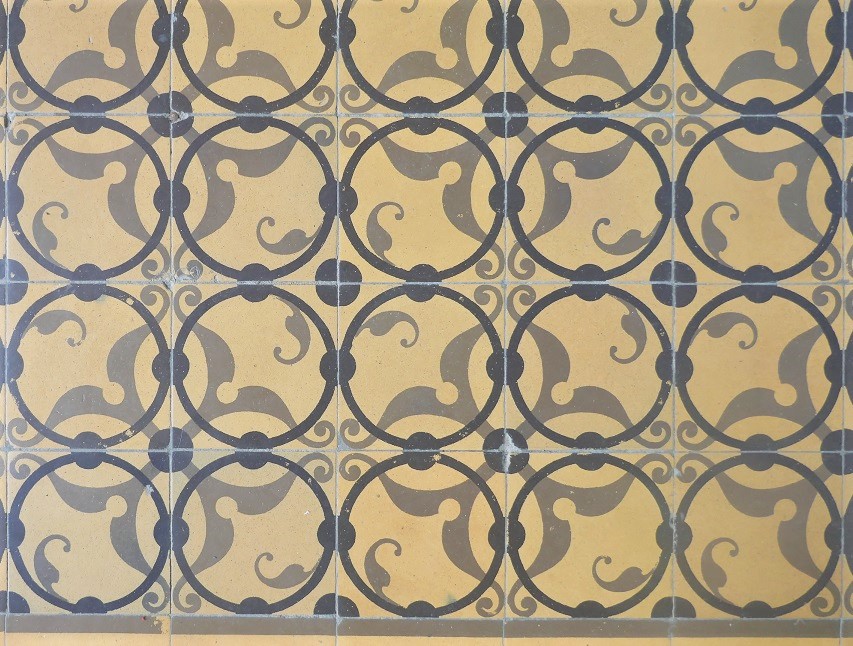
The Racławice Panorama Rotunda
After WWII, the Racławice panorama was moved to Wrocław where it continues to be a very popular tourist attraction. Now the rotunda is the Department of Physical Education of the Lviv Polytechnic.

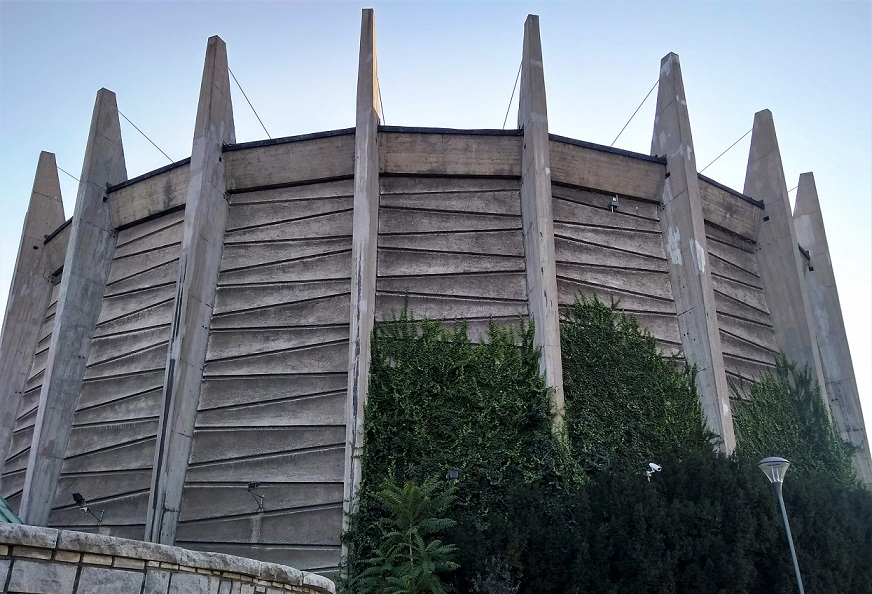
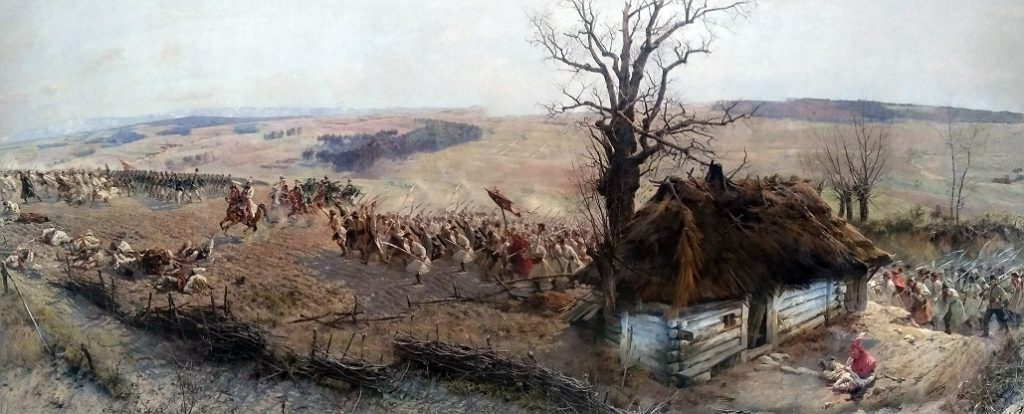
The Water Tower
For many years the tower stood empty, until in 1976 a cafe named Vezha (Tower) was opened. In 1981 it became the first cafe in Lviv to have a VHS and screen non-Soviet movies. Today there is a cafe, which is also called Vezha.
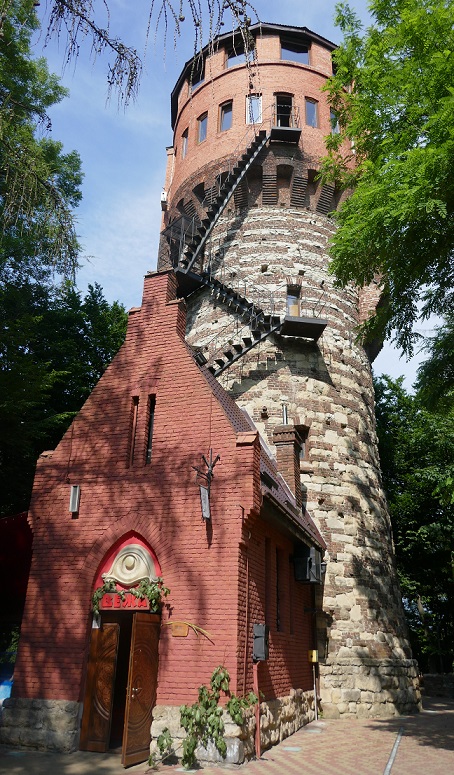
By Areta Kovalska
Sources:
Marcin Siadkowksi, “The Land Exhibition in Lemberg (Lwow, Lvov) in 1894, Galicia and Schlachzizen in the German Political Discourse in Vienna”
Larry Wolff, The Idea of Galicia: History and Fantasy in Habsburg Political Culture, 2010
Galician mining and metallurgy in the light of the General Regional Exhibition of Lviv in 1894
Локальна Історія
Вежа у Стрийському парку, або де у Львові з’явився перший відеомагнітофон
Urban Image Database, The Center for Urban History of East Central Europe
Weronika Drohobycka-Grzesiak, National Contexts at the Galician General Provincial Exhibition (Lviv 1894)
See also:


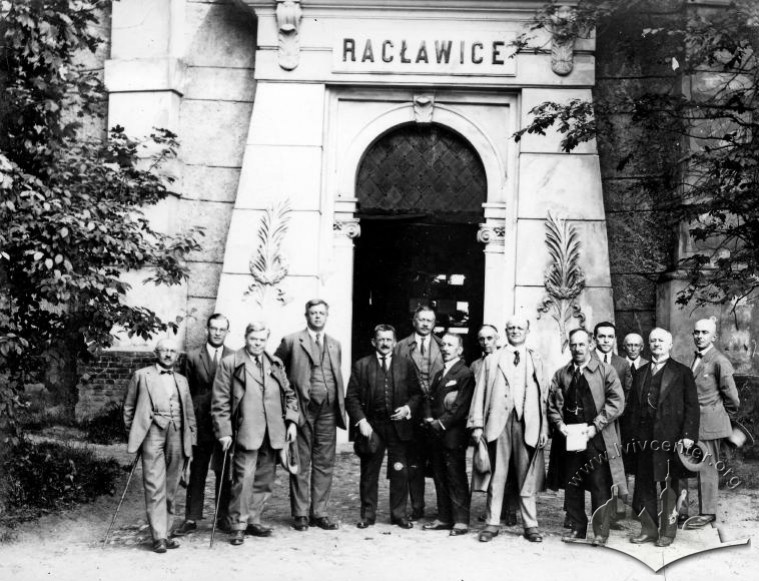
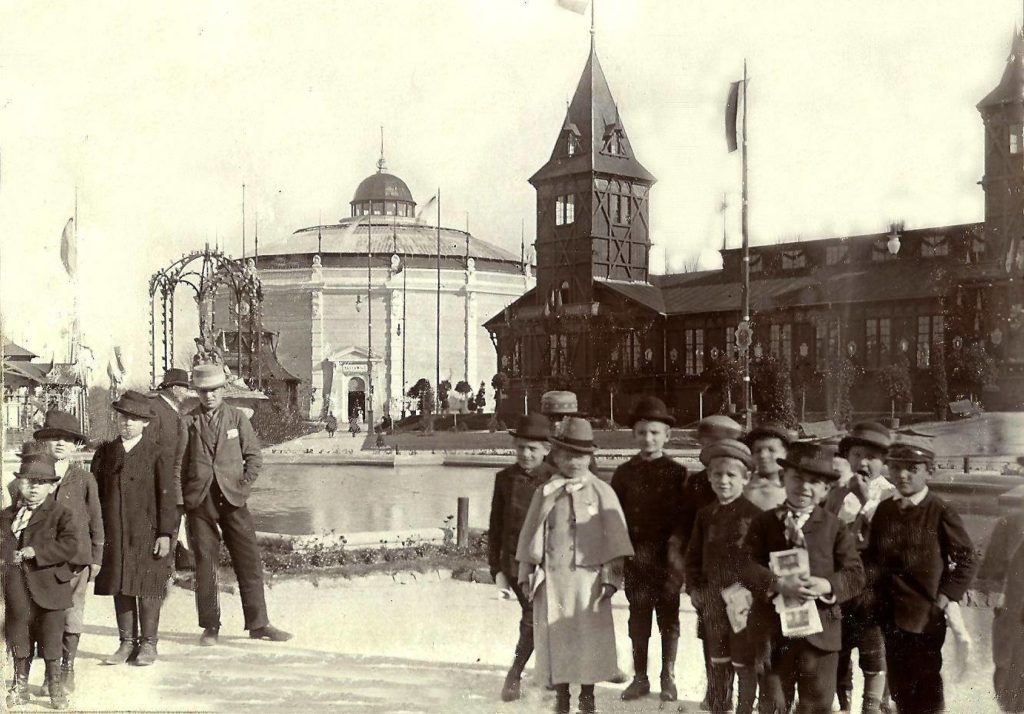
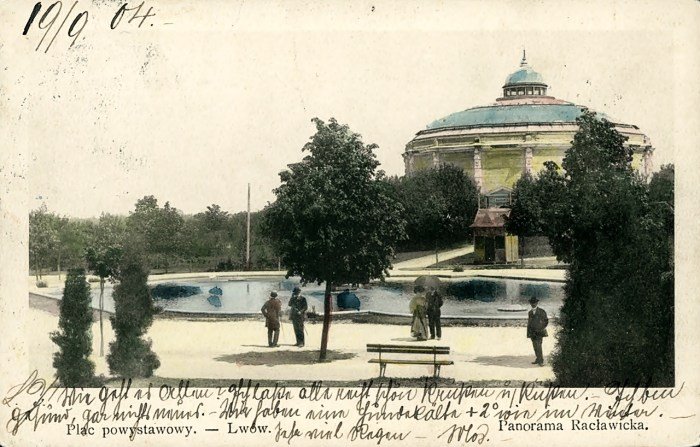
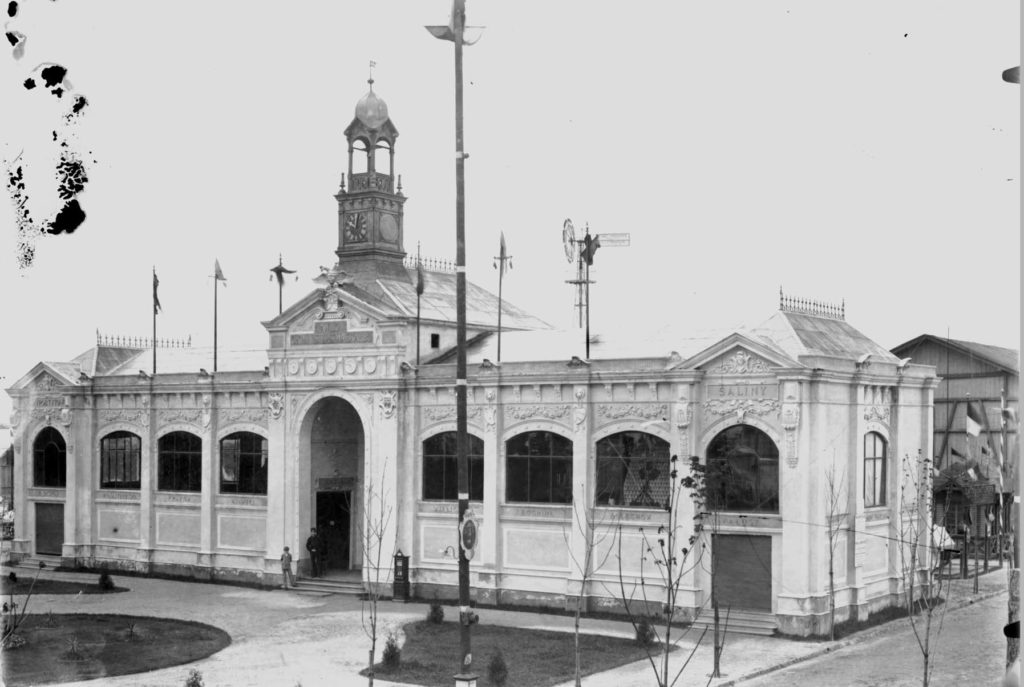
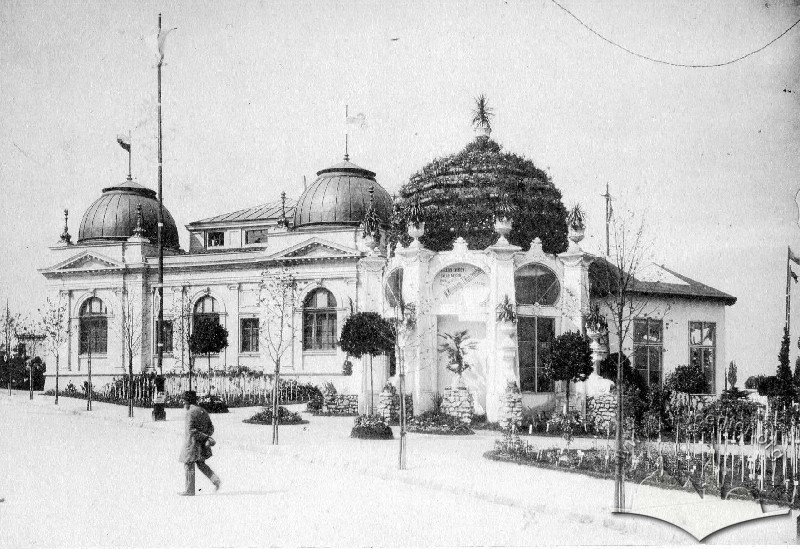
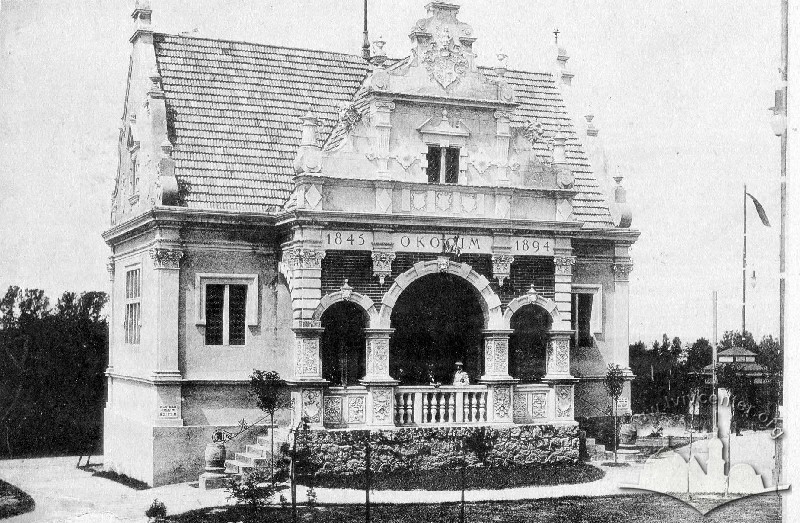
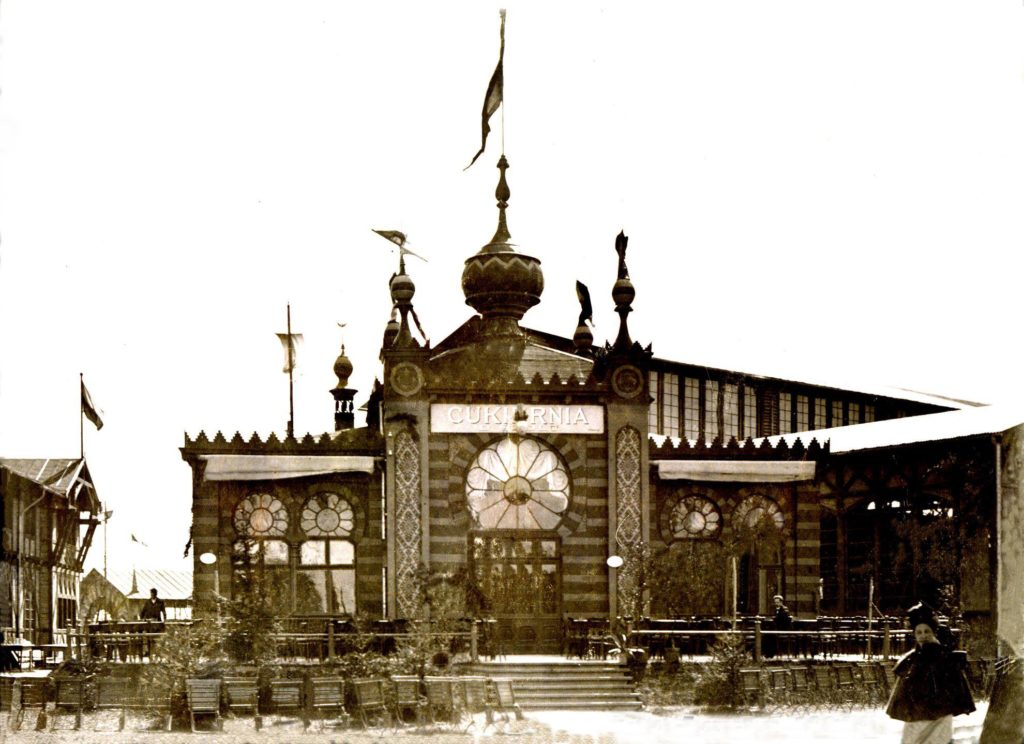
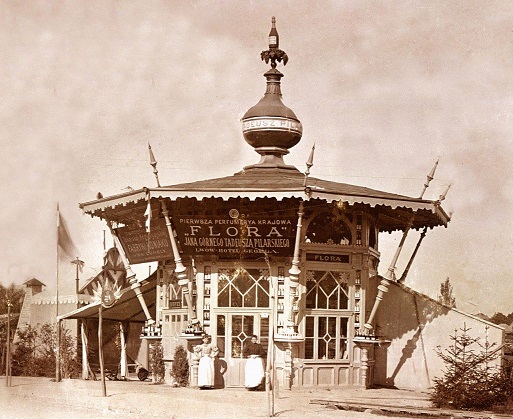

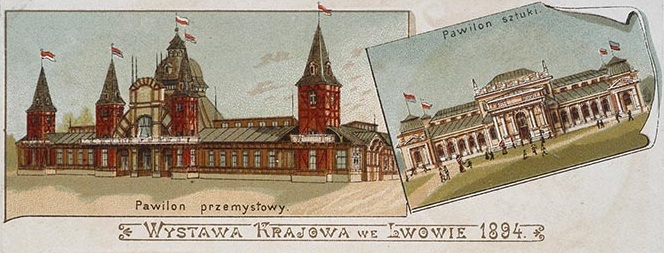




[…] The Pavilions of the Galician General Regional Exhibition of 1894 – Forgotten Galicia The Pavilions of the Galician General Regional Exhibition of 1894 July 13, 2019 The largest fair in … […]